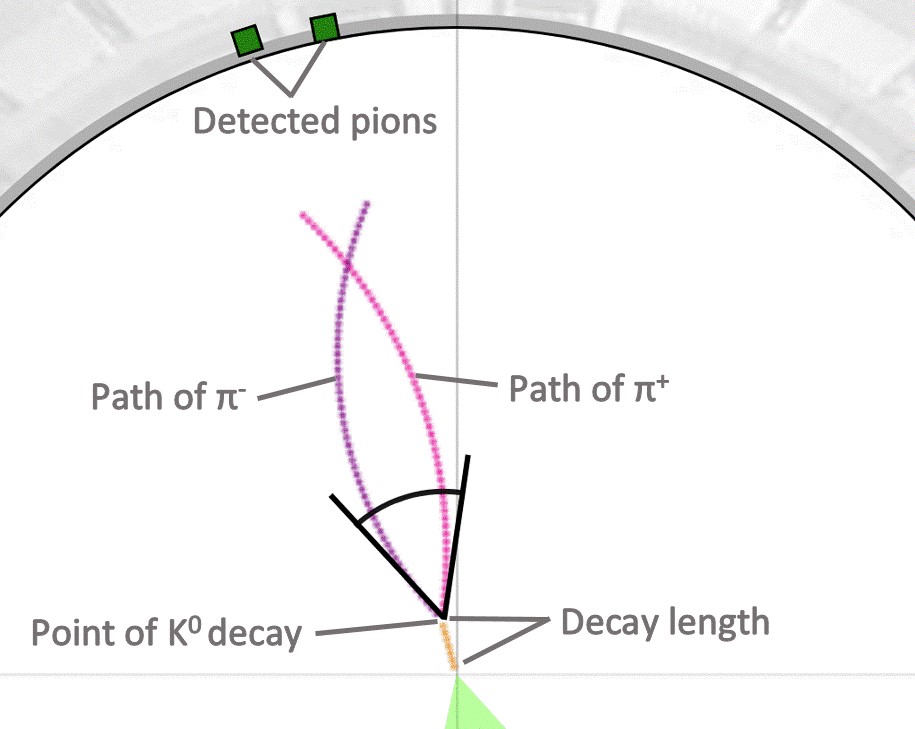Aim: to determine the rest mass and lifetime of a neutral particle, the kaon (K0), by studying its decay products ‒ a π+, π− pair ‒ and its decay length ‒ the distance travelled by the K0 from creation to decay.
The electron and positron annihilate to form a K0 and a JET of particles such as pions. You can assume that the JET and the K0 each have total energy equal to the incident beam energy. The K0 travels in a straight line and leaves no track because it has zero electrical charge (the invisible track is shown in blue in the simulation). After a period of time, usually short, the K0 decays into a π+, π− pair, where the blue track changes into two red tracks. The charged pion pair is affected by the uniform magnetic field, coming out of the screen, and follow curved trajectories, depicted in red.
As with the charged particle pairs in the previous exercise, the K0 has no preferred direction of motion. Likewise, the JET has no preferred direction, however, relative to the kaon it always points in the opposite direction in order to conserve momentum. Notice also that as the beam energy is increased, the angular spread of the JET decreases.
Conservation of momentum causes the pions to be created travelling in the same general direction as the K0 was before it decayed. The pions also follow trajectories with different radii on each new firing sequence, since they have different momenta on each decay.
Despite changing on each firing sequence, the form of the pion trajectories fall into two main categories. Their tracks either, initially diverge before coming back on themselves and crossing, or they diverge and never cross (see figure below). This is a consequence of the initial orientation of the π+, π− pair, at creation.


